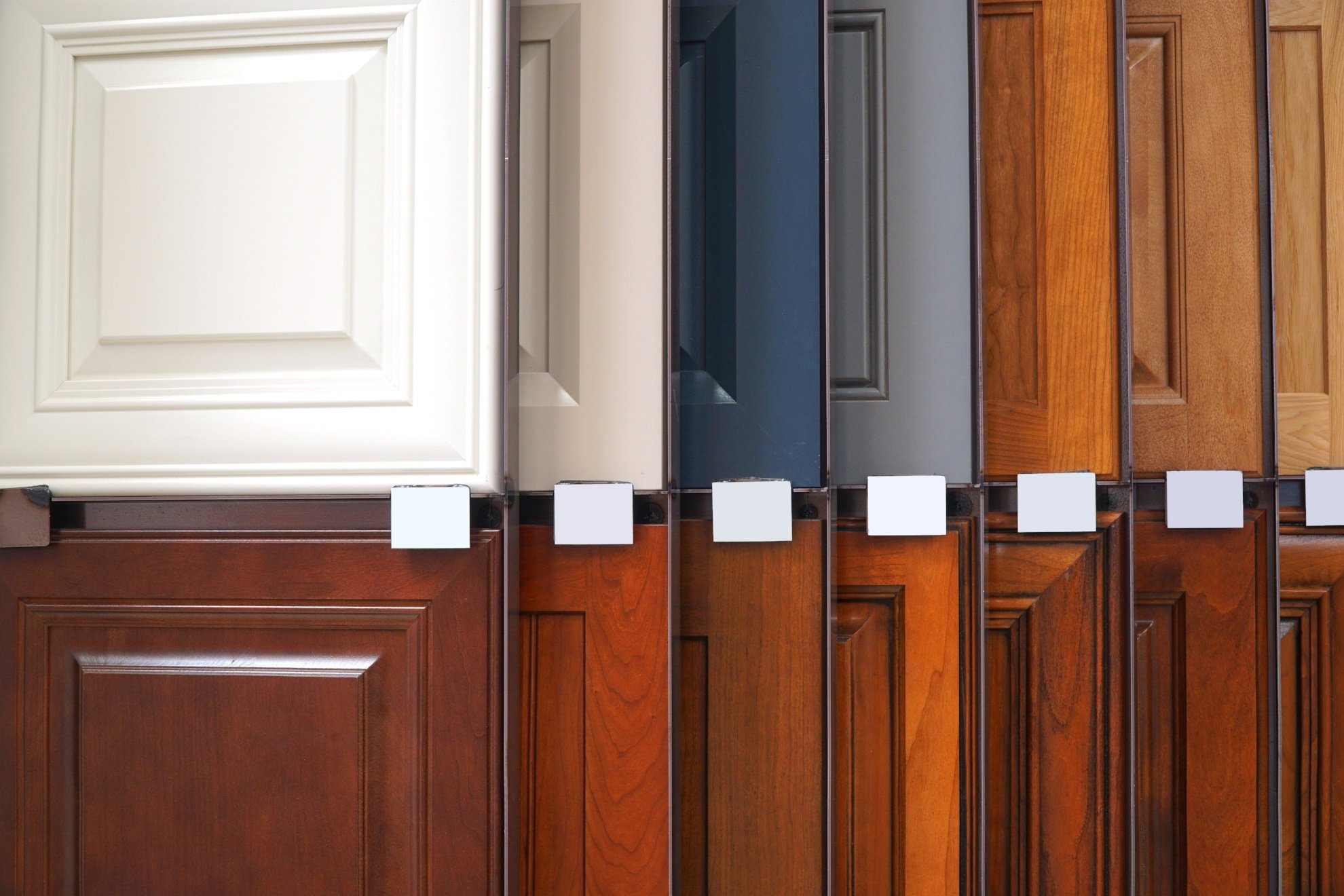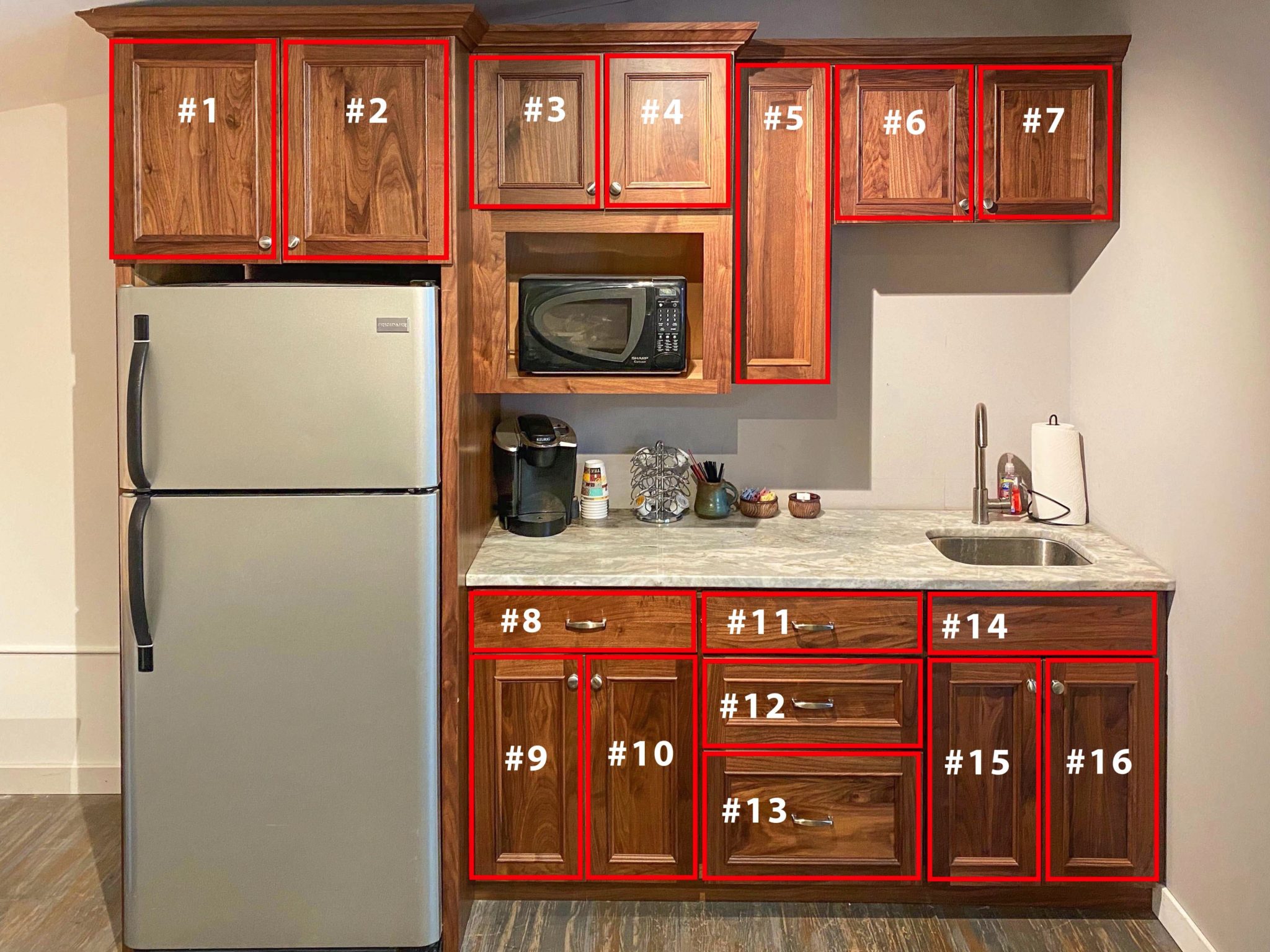Cost-Effectiveness of Replacing Only Kitchen Cabinet Doors: Can You Replace Just Kitchen Cabinet Doors

Replacing only kitchen cabinet doors presents a compelling cost-effective alternative to a full kitchen remodel. This approach allows homeowners to achieve a significant aesthetic upgrade while minimizing expenses and disruption. This analysis compares the cost and benefits of this strategy against a complete kitchen overhaul.
Cost Comparison: Refacing vs. Full Remodel
A full kitchen remodel encompasses demolition, plumbing and electrical work, new cabinetry, countertops, flooring, and appliances. The cost can easily reach tens of thousands of dollars, depending on the scale and materials chosen. Replacing only the cabinet doors, on the other hand, involves significantly less labor and material. The cost typically ranges from a few hundred dollars for basic doors to several thousand for high-end custom options. Labor costs for refacing are substantially lower, focusing primarily on door installation rather than extensive carpentry. Material costs are limited to the doors themselves, hinges, and possibly new drawer fronts. A full remodel necessitates expenses across a far broader spectrum, including demolition waste removal, potentially new drywall, and installation of all new components. For instance, a full remodel in a mid-sized kitchen might cost $20,000 – $40,000, while refacing the doors could cost between $2,000 – $8,000, depending on the size of the kitchen and the choice of materials.
Lifespan Comparison: Refaced vs. New Cabinets
The longevity of refaced cabinets versus entirely new cabinets depends heavily on the quality of materials and workmanship.
| Feature | Refaced Cabinets | New Cabinets | Notes |
|---|---|---|---|
| Initial Cost | $2,000 – $8,000 | $8,000 – $20,000+ | Significant cost savings with refacing. |
| Maintenance Costs | Low (minor repairs/cleaning) | Low (minor repairs/cleaning) | Both require minimal maintenance with proper care. |
| Overall Lifespan | 10-15 years | 20-30 years+ | New cabinets offer longer lifespan, but refacing provides a cost-effective interim solution. |
Resale Value Impact: Refacing vs. Full Renovation
While a full kitchen renovation significantly boosts resale value, often yielding a return on investment exceeding 50% (depending on market conditions and the quality of the renovation), replacing only the cabinet doors provides a more modest but still appreciable increase. The visual impact of updated doors can be substantial, making the kitchen appear more modern and appealing to potential buyers. This translates to a higher asking price, though the return on investment will be less than a full renovation. For example, a full renovation might increase a home’s value by $30,000, whereas refacing doors might increase it by $5,000 – $10,000, still representing a valuable improvement with lower initial investment. The actual increase depends on several factors, including the home’s location, overall condition, and the quality of the refacing work.
Practical Considerations and Process of Replacing Kitchen Cabinet Doors

Replacing only your kitchen cabinet doors offers a cost-effective way to refresh your kitchen’s aesthetic. However, a successful renovation hinges on careful planning and execution. This section details the practical steps involved, from measuring existing doors to installing the new ones.
Measuring Existing Cabinet Doors
Accurate measurements are crucial for ordering the correct replacement doors. Inaccurate measurements will lead to ill-fitting doors and potential wasted expenses. Begin by identifying the type of hinges used on your current doors, as this influences the type of replacement doors you can use. For each cabinet door, you will need to measure the following: height, width, and depth. Also, note the hinge placement and the type of hinge. Pay close attention to any variations in door sizes, even within the same cabinet run, as inconsistencies are common. For example, upper cabinets often have slightly different dimensions than lower cabinets. Challenges might include doors with unusual shapes or those that have been modified over time. Use a measuring tape and a level to ensure accurate readings. Record all measurements meticulously in a notebook or spreadsheet. Taking photographs of each cabinet door with its measurements annotated can prove invaluable.
Selecting Replacement Cabinet Doors
Choosing the right replacement cabinet doors involves considering several key factors to ensure a seamless and aesthetically pleasing result.
- Style: Consider the overall style of your kitchen and choose doors that complement it. Options range from traditional raised-panel doors to contemporary slab doors. Matching the existing style or subtly updating it with a similar style is generally recommended for a cohesive look.
- Material: Common materials include wood (solid wood, MDF, or plywood), thermofoil, and melamine. Wood offers durability and a high-end look, but is more expensive. Thermofoil is a cost-effective option that is easy to clean, while melamine is budget-friendly but less durable. Consider the moisture levels in your kitchen when selecting materials, opting for moisture-resistant options if necessary.
- Finish: The finish impacts both the look and durability of your doors. Consider factors like paint color, stain, or veneer. Match the existing finish or choose a complementary color to create a cohesive look. A high-quality finish is important for long-term durability and easy maintenance.
- Hardware: Determine whether you will reuse your existing hinges and knobs or purchase new ones. Matching the existing hardware is a good way to maintain consistency. If you opt for new hardware, consider the style and finish to complement your new doors.
Installing New Cabinet Doors
Replacing cabinet doors requires careful attention to detail and the use of appropriate tools. Safety precautions should be observed throughout the process.
- Gather Tools and Materials: Assemble all necessary tools, including a screwdriver (Phillips and flathead), level, measuring tape, pencil, safety glasses, and potentially a drill and cabinet door hinges.
- Remove Existing Doors: Carefully remove the existing cabinet doors, taking note of the hinge placement and any other relevant details. Photograph the process to aid reassembly if needed.
- Prepare New Doors: Inspect the new doors for any damage or defects. If using pre-hung doors, prepare them according to the manufacturer’s instructions.
- Install New Hinges (if necessary): If your new doors require new hinges, install them according to the manufacturer’s instructions, ensuring they are properly aligned and securely fastened.
- Attach New Doors: Carefully attach the new doors to the cabinet frames, ensuring they are level and aligned. Use the level frequently to check for plumb and square.
- Install New Hardware: Install new knobs or pulls, if desired. Ensure they are securely fastened and aligned.
- Inspect and Adjust: Inspect the installed doors for any misalignment or issues. Make any necessary adjustments to ensure a proper fit and function.
Aesthetic and Design Aspects of Replacing Only Kitchen Cabinet Doors

Replacing only your kitchen cabinet doors offers a surprisingly impactful way to refresh your kitchen’s aesthetic without the expense and disruption of a full remodel. A strategic choice of door style, material, and hardware can dramatically alter the overall feel of the space, transforming it from dated to contemporary, or from rustic to modern, depending on your vision. This cost-effective approach allows for significant customization and personalization, making it an attractive option for homeowners seeking a quick and budget-friendly kitchen upgrade.
Can you replace just kitchen cabinet doors – The transformation potential is significant. Imagine a kitchen with tired, outdated oak cabinets. Replacing the doors with sleek, shaker-style doors in a crisp white finish instantly modernizes the space. Or consider a kitchen with plain, flat-panel doors; switching to raised-panel doors with intricate detailing can add a touch of classic elegance. The possibilities are vast, limited only by your imagination and budget.
Cabinet Door Styles and Materials
The selection of cabinet door styles and materials is crucial in determining the final look and feel of your kitchen. Different styles evoke different moods and suit various design aesthetics. Shaker style doors, characterized by their simple, flat-panel design and recessed center panel, offer a clean, modern look that complements both traditional and contemporary kitchens. Raised panel doors, with their raised center panel, project a more traditional and formal appearance. Beadboard doors, with their vertical or horizontal grooves, create a charming, cottage-style feel. The material choice also plays a significant role. Solid wood doors offer durability and a natural warmth, while thermofoil doors provide a more affordable and low-maintenance option with a wide range of color and finish choices. Laminate doors are another cost-effective alternative, offering a variety of styles and finishes that mimic the look of wood or other materials. Consider the existing style of your kitchen and the overall design scheme when making your selection.
Cabinet Door Hardware Selection
Cabinet hardware, often overlooked, is a key element in completing the updated look. The right hardware can elevate the overall design, tying together the new cabinet doors and the existing kitchen elements. Choosing the wrong hardware, however, can detract from the overall aesthetic. Consider the style of your new doors and the overall design scheme of your kitchen when selecting hardware.
For example, sleek, minimalist bar pulls in brushed nickel or matte black would complement modern shaker-style doors and a contemporary kitchen design. These create a clean, uncluttered look. Alternatively, ornate knobs or pulls in antique brass or oil-rubbed bronze would add a touch of traditional elegance to raised-panel doors in a more classic kitchen setting. The material of the hardware should also be considered; metal options like stainless steel, brass, and bronze offer durability and a sophisticated look, while ceramic or glass knobs can add a touch of personality and color. The size and placement of the hardware should also be carefully considered to ensure a balanced and aesthetically pleasing result. For instance, larger pulls might be suitable for larger doors, while smaller knobs might be more appropriate for smaller cabinets or drawers. The overall balance of size and style of the hardware is important for a cohesive look.
Updating Your Kitchen: A Cost-Effective Approach, Can you replace just kitchen cabinet doors
Revitalizing your kitchen doesn’t necessitate a complete demolition and rebuild. Often, a targeted approach focusing on key areas yields significant visual improvements at a fraction of the cost. Replacing cabinet doors is a prime example. The existing cabinet boxes, often in good condition, provide a solid foundation, allowing for a cost-effective upgrade that focuses solely on aesthetics. This approach allows for personalization, choosing styles and finishes that perfectly match your taste and the overall kitchen design. Careful planning, including measuring existing doors for accurate replacements, selecting appropriate materials, and choosing complementary hardware, ensures a smooth and successful transformation. The result is a refreshed kitchen that feels new, without the hefty price tag of a full renovation.
